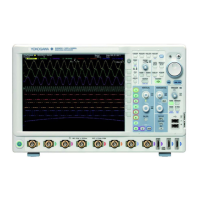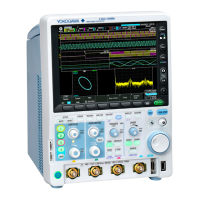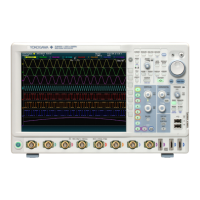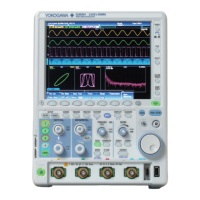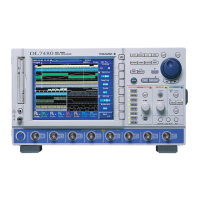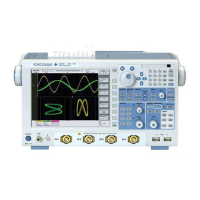5-281
IM 710105-17E
Commands
5
:WAVeform:RECord? MINimum
Function Queries the minimum record number of the source
channel.
Syntax
:WAVeform:RECord? MINimum
Example
:WAVEFORM:RECORD? MINIMUM
->:WAVEFORM:RECORD−49999
:WAVeform:SEND?
Function Queries the waveform data specified by the
:WAVeform:TRACe
command.
Syntax
:WAVeform:SEND? [<NRf>]
<NRf> = 1 to 50000
The range of values varies depending on the
record length.
Example
:WAVEFORM:SEND?
-> #8
(number of bytes, 8 digits)(data byte
sequence) or <NRf>,<NRf>,...
Description • The output format for
:WAVeform:SEND?
varies depending on the
:WAVeform:FORMat
setting.
(1) If ASCii is specified, the DLM2000 returns
the data in this format:<Voltage>, <Voltage>, ...
<Voltage>
(2) If BYTE or WORD is specified, the DLM2000
returns the data in the <Block data> format.
The data can be converted using the following
equation. Voltage (computed value) = (Range ×
data ÷ division*) + offset
* BYTE:Division = 12.5
WORD:Division = 3200
(3) If RBYTe is specified, the DLM2000 returns
the data in the <Block data> format. The data
can be converted using the following equation.
Voltage(computedvalue)=(Range×(data−
position) ÷ division*) + offset
* Division = 25
Position = The return value of
:WAVeform:POSition?
• <NRf> can be omitted. If you specify <NRf>,
waveform data is queried <NRf> times in order
starting from the record located at the record
number specified by
:WAVeform:RECord
−
<NRf>.
:WAVeform:SIGN?
Function Queries whether or not signs are included in the
binary data of the source waveform specified by
:WAVeform:TRACe
when the data is queried.
Syntax
:WAVeform:SIGN?
Example
:WAVEFORM:SIGN?
-> :WAVEFORM:SIGN 1
:WAVeform:SRATe? (Sample RATE)
Function Queries the sample rate of the record specified by
the
:WAVeform:RECord
command.
Syntax
:WAVeform:SRATe?
Example
:WAVEFORM:SRATE?
-> :WAVEFORM:SRATE 1.25E+09
:WAVeform:STARt
Function Sets or queries which point will be used as the
first data value for the waveform specified by
:WAVeform:TRACe
.
Syntax
:WAVeform:STARt {<NRf>}
:WAVeform:STARt?
<NRf> = 0 to 249999999
Example
:WAVEFORM:START 0
:WAVEFORM:START?
-> :WAVEFORM:START 0
:WAVeform:TRACe
Function Sets or queries the waveform that WAVeform
commands will be applied to.
Syntax
:WAVeform:TRACe {<NRf>|LOGic|MATH<x>}
:WAVeform:TRACe?
<NRf> = 1 to 4 (1 or 2 for 2-channel models)
<x> = 1 or 2 (1 only for 2-channel models)
Example
:WAVEFORM:TRACE 1
:WAVEFORM:TRACE?
-> :WAVEFORM:TRACE 1
:WAVeform:TRIGger?
Function Queries the trigger position of the record specified
by the
:WAVeform:RECord
command.
Syntax
:WAVeform:TRIGger?
Example
:WAVEFORM:TRIGGER?
-> :WAVEFORM:TRIGGER 6250
Description Queries the number of points from the beginning
of the record to the trigger position.
:WAVeform:TYPE?
Function Queries the acquisition mode of the waveform
specified by the
:WAVeform:TRACe
command.
Syntax
:WAVeform:TYPE?
Example
:WAVEFORM:TYPE?
-> :WAVEFORM:TYPE NORMAL
5.34 WAVeform Group

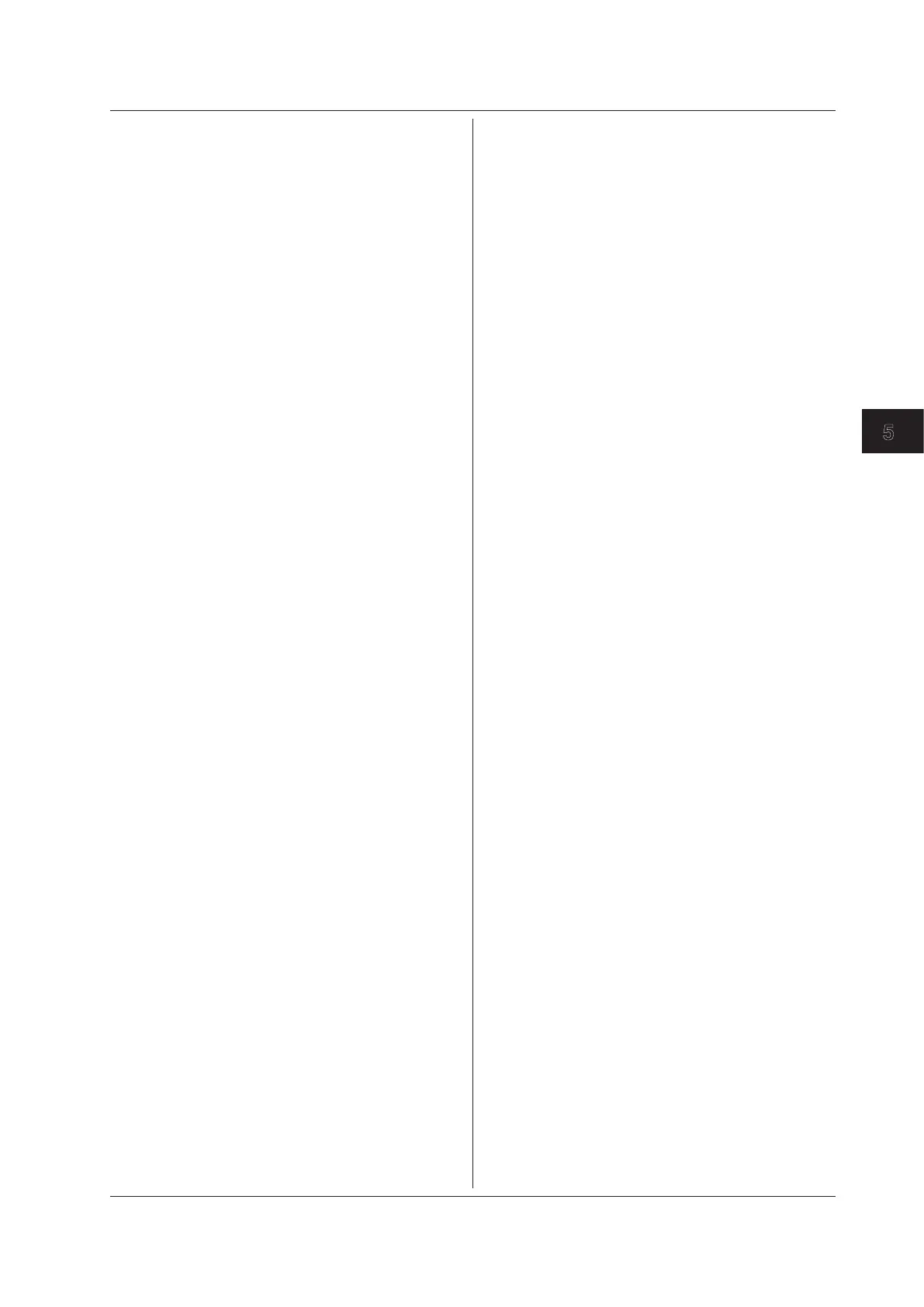